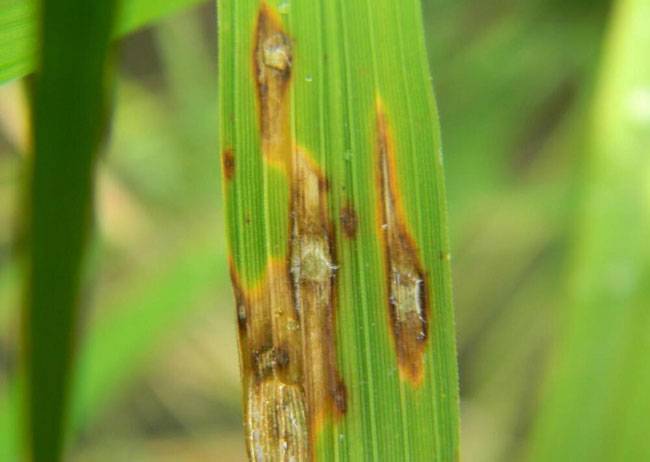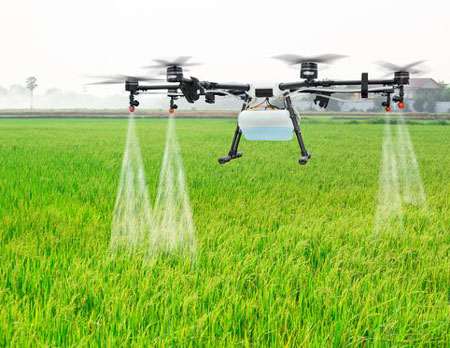Paddy
Blast

Magnaporthe oryzae
Fungal Disease

Magnaporthe oryzae
Fungal Disease

Magnaporthe oryzae
Fungal Disease

Magnaporthe oryzae
Fungal Disease
Rice blast, caused by the fungus Magnaporthe oryzae, is one of the most destructive diseases of rice, affecting all above-ground parts of the plant, including the leaf, collar, node, neck, panicle, and sometimes the leaf sheath. It can lead to significant yield losses if left unmanaged.
Why and Where It Occurs
Environmental Conditions:
- Optimal weather conditions for blast development include:
- Maximum temperature: 26.75–29.5°C.
- Minimum temperature: 16.5–19.25°C.
- Morning relative humidity: 80.5–94%.
- Evening relative humidity: 60.1–80.5%.
- Sunshine duration: 2.5–9.5 hours.
- Common in areas with low soil moisture, frequent and prolonged rain showers, and cool daytime temperatures.
- Optimal weather conditions for blast development include:
Growth Stage Susceptibility:
- Blast can occur at all growth stages.
- Leaf blast incidence decreases as plants mature and develop resistance.
How to Identify
Symptoms on Leaves:
- Initial symptoms: White to gray-green lesions or spots with dark green borders.
- Older lesions: Elliptical or spindle-shaped, with whitish to gray centers and red to brownish borders.
- Advanced lesions: Diamond-shaped, wide in the center, and pointed at the ends.
- Coalescing lesions can kill entire leaves.
Collar Blast:
- Lesions appear at the junction of the leaf blade and sheath.
Differentiating from Brown Spot:
- Blast lesions: Elongated, pointed ends, grayish-white centers.
- Brown spot lesions: Rounded, brown with a yellow halo.
Why It Is Important
- Impact on Seedlings: Can kill plants up to the tillering stage.
- Yield Loss: Severe leaf blast reduces the leaf area available for grain filling.
- Economic Losses: In severe cases, yield losses can be devastating.
How to Manage
Plant Resistant Varieties:
- Use locally recommended blast-resistant varieties.
Cultural Practices:
- Adjust planting time: Sow seeds early after the onset of the rainy season.
- Apply nitrogen fertilizers in splits to avoid excessive nitrogen levels.
- Flood fields regularly to minimize disease spread.
Silicon Application:
- Use silicon fertilizers (e.g., calcium silicate) for silicon-deficient soils.
- Ensure that rice straw used as a silicon source is free from blast infection.
Chemical Control:
- Apply systemic fungicides like triazoles and strobilurins judiciously.
- Fungicide application at heading is particularly effective.
By integrating these management practices, farmers can minimize the impact of rice blast and secure better yields.
Image Credits: II, Plantvillage




